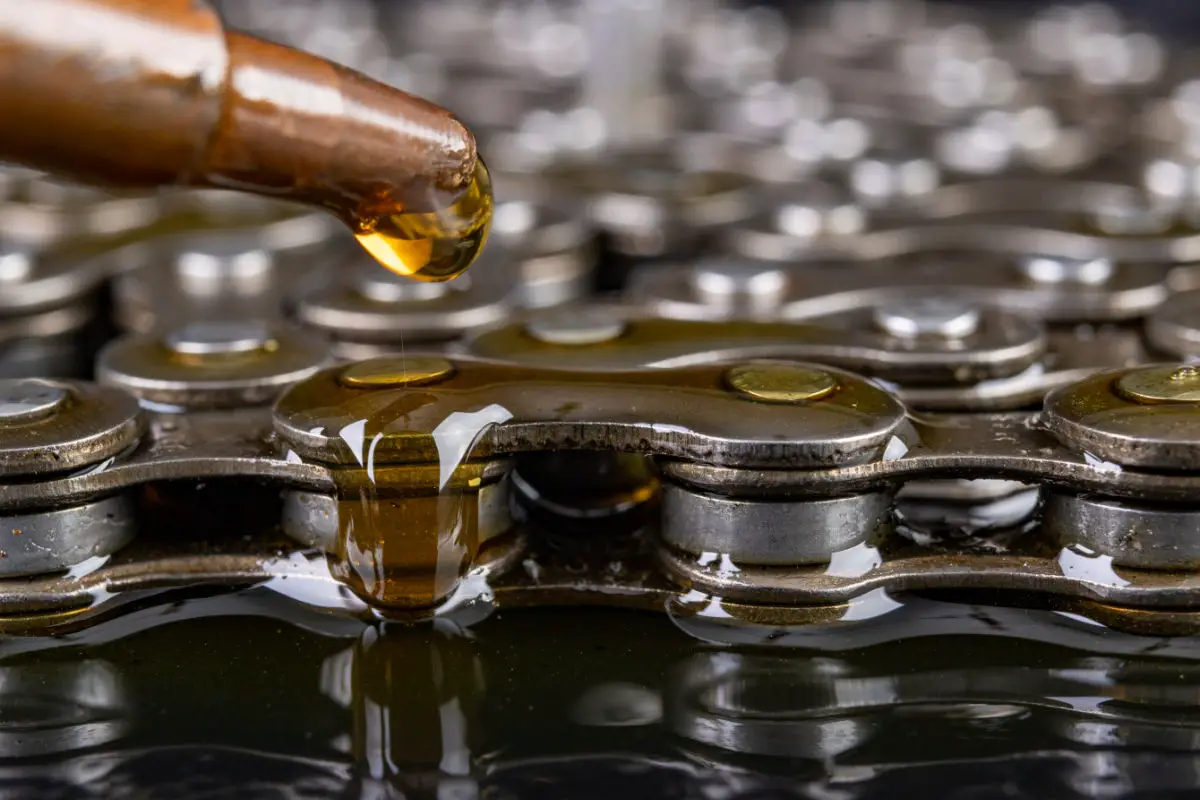How To Get Bike Grease Out Of Clothes?

If you’ve been a biker for any length of time, it wouldn’t be a surprise to know that you’ve encountered “grease incidents” every once in a while.
While most of the time, it doesn’t create too much of a nuisance, bike grease can occasionally be a bothersome inconvenience as it has a tendency to find its way onto your clothing and leave a “lasting impression” if it’s not taken care of immediately.
Sometimes, it also seems to persist despite your best efforts to scrape and scrub.
So, the next time you’re working on your bike and a glob of grease spills across your shirt, try out one of the below tips that may help you with your ‘situation.’

Act Quickly:
It’s a no-brainer; the faster you act, the better it is. It’s best to tend to a grease stain as soon as possible, as bike grease is difficult to get off and can harden into cloth very rapidly.
Therefore, act fast to remove any grease stains as soon as you spot them, especially if they’re on one of your expensive garments.
It would also be a wise idea to carry stain remover or other cleaning products on your rides to handle them as soon as they appear.
Use A Stain Remover:
Bike grease stains can be effectively removed with the help of a good-quality stain remover.
Stain removers come in a variety of forms, including liquid or powder detergents, pre-wash treatments, and spray-on solutions.
Pick one that has instructions on the product label, and use it as directed to remove the stains.
Apply the stain remover directly on the stain for best results, and let it soak into the fabric for a few minutes before rinsing or washing.
Use Hot Water And Soap:
Hot water and soap are a good first line of defense if you do not have a specialized stain remover to get rid of grease: If you act fast, it might work wonders.
After rinsing the stain with hot water to remove any remaining grease, liberally spray the stain with dish soap or laundry detergent.
Use a soft cloth or sponge to work the soap into the stain before rinsing the area with hot water. This can aid in the breakdown of the grease and its removal from the fabric.
Use A Solvent Or Degreaser:
Now we are entering “tough-stain” territory. In situations like these, you might need to use a solvent or degreaser to remove a difficult discoloration.
Solvents and degreasers are strong cleaning products that can dissolve and remove grease and oil and effectively remove stains from garments.
These types of products are usually used in an industrial or automotive setting. So, make sure to use one that is safe to use on clothing.
Also, make sure to read the product’s label before application. Apply the solvent or degreaser directly to the stain, and let it soak into the fabric for a few minutes.
You can then rinse it with water afterward.

Use A Washing Machine:
After using a stain remover, solvent, or degreaser to treat the stain, you can then wash the garment in a washing machine.
Use a generous amount of washing detergent and the hottest water temperature that is safe for the fabric.
You can also add a stain booster or oxygen bleach to the wash cycle to help remove these tough stains.
Just read the instructions beforehand to prevent dye transfer if you are washing it with other clothes.
Contact A Dry Cleaner:
Well, the last resort is to take the garment to a dry cleaner if the stain is still noticeable after washing, is sensitive, or cannot be removed from the wash cycle in a washing machine.
Bike grease stains can be easily removed with the aid of specialist tools and cleaning agents that are typically available with a professional dry cleaner.
Also, they are capable of assessing the fabric for damage and colorfastness and can utilize gentle cleaning products and techniques before washing the garments.
If you decide to take this route, be sure to describe the stain and how it happened so that the dry cleaner can properly assess and employ the right proper procedures.




